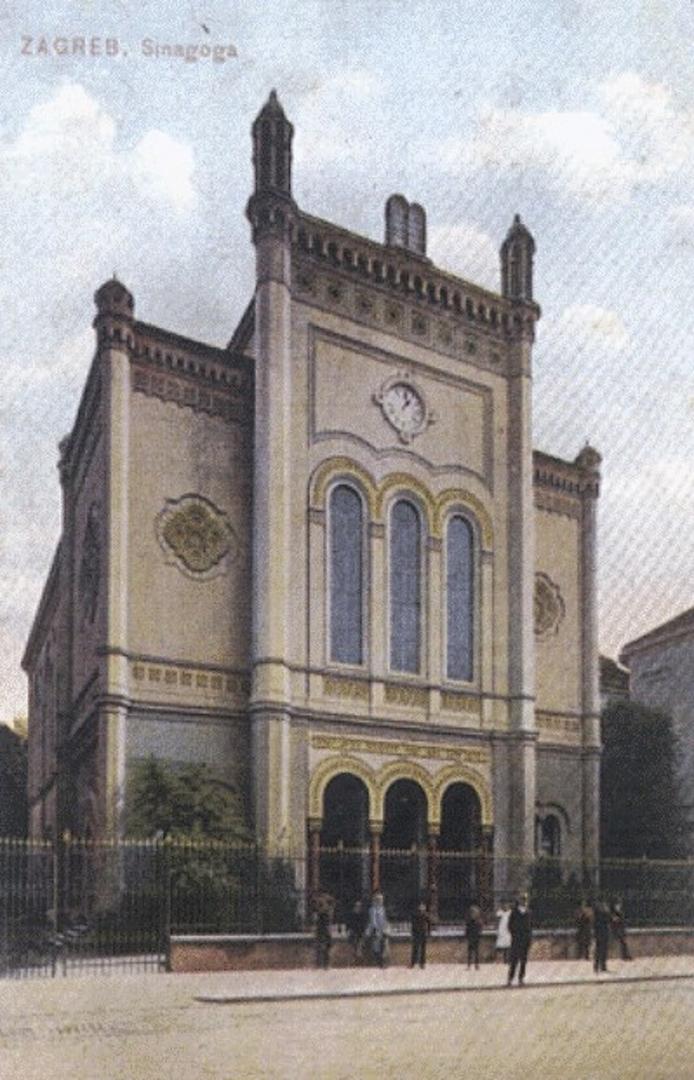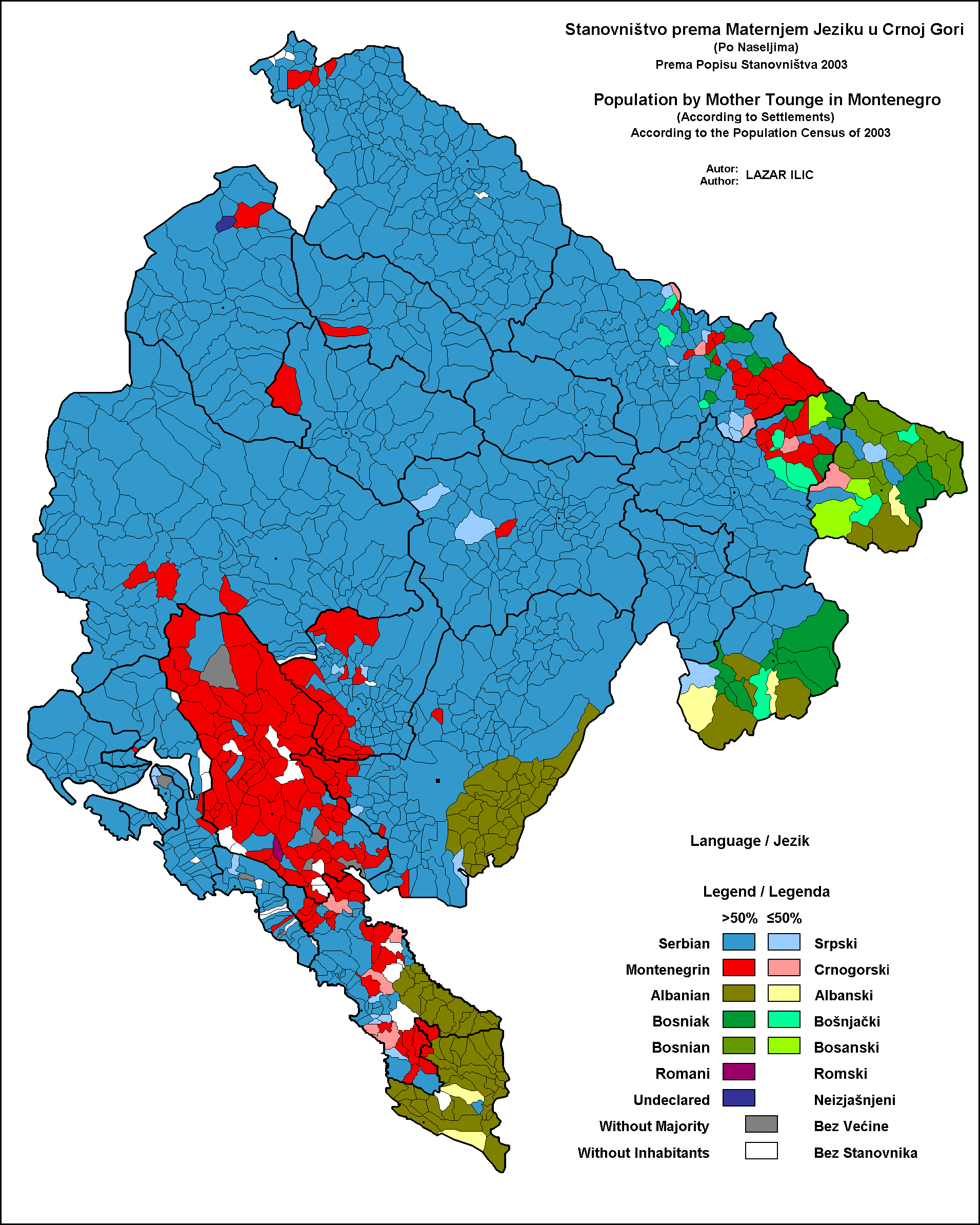|
Kankaraš
Kankaraš (Montenegrin language, Montenegrin, sr-cyr, Канкараш) is a Serbo-Croatian surname found mostly in Montenegro. Its bearers are either Orthodox Christian or Muslim. There is an old Kankaraš brotherhood () of the Drobnjaci tribe around Golija, Montenegro, Golija near Nikšić (in northwestern Montenegro). A part of the Kankaraši settled Plovdiv, Bulgaria and changed their surname to ''Černogorski'' ("Montenegrin"). The Muslim Kankaraš family in Pljevlja hail from Foča, which they left following the Austro-Hungarian occupation of Bosnia and Herzegovina (1878); they are not related to the Kankaraš family in the town. The name is a nickname, derived from Turkish, meaning "large black eyebrows". At least seven individuals with the surname died in the The Holocaust in the Independent State of Croatia, Holocaust in Croatia. It may refer to: *Gorica Kankaraš, best Serbian female weightlifter 58 kg, 71 kg and 84 kg. *Miodrag Kankaraš, former mayor o ... [...More Info...] [...Related Items...] OR: [Wikipedia] [Google] [Baidu] |
Branko Kankaraš
Branko Kankaraš (; born 28 May 1988) is a retired Serbian-born Montenegrin handball player. Club career At club level, Kankaraš played in Serbia ( Jugović, Metaloplastika, and Vojvodina), Turkey (Mersin), France (Valence and Istres), Belarus ( Meshkov Brest), North Macedonia ( Metalurg Skopje), and Israel (Maccabi Rishon LeZion). International career At international level, Kankaraš represented Montenegro at two European Championships (2016 and 2020 2020 was heavily defined by the COVID-19 pandemic, which led to global Social impact of the COVID-19 pandemic, social and Economic impact of the COVID-19 pandemic, economic disruption, mass cancellations and postponements of events, COVID- ...). References External links LNH record* {{DEFAULTSORT:Kankaras, Branko 1988 births Living people Sportspeople from Novi Sad Serbian people of Montenegrin descent Montenegrin people of Serbian descent Serbian male handball players Montenegrin male handball players ... [...More Info...] [...Related Items...] OR: [Wikipedia] [Google] [Baidu] |
Drobnjaci
Drobnjaci (, ) are historical tribe and region, Drobnjak, in Old Herzegovina in Montenegro (municipalities from Nikšić to Šavnik, Žabljak and Pljevlja). Its unofficial centre is in Šavnik. The Serb Orthodox families have St. George (''Đurđevdan'') as their patron saint (''slava'') and the majority of Drobnjak churches are devoted to St. George as well. Families of distant Drobnjak origin are present in all former Yugoslav republics and in Hungary and Hungarian populated parts of Romania and Slovakia where it is spelled in its magyarised form as Drobnyák. History Origin and early history According to Serbian historian Andrija Luburić (1930), by oral tradition their origin was from Travnik in Bosnia and Herzegovina, and initially were called as ''Novljani''. First mention of the name was in 1285 Ragusan document, where was mentioned ''Vlach'' Bratinja Drobnjak. Term Vlach has germanic root ''walh'' meaning ''foreigner''. The surname probably derives from tribal or regio ... [...More Info...] [...Related Items...] OR: [Wikipedia] [Google] [Baidu] |
The Holocaust In The Independent State Of Croatia
The Holocaust in the Independent State of Croatia ( hr, Holokaust u Nezavisnoj Državi Hrvatskoj; he, השואה במדינת קרואטיה העצמאית) involved the genocide primarily of Jews, and also the genocide of Serbs (the Genocide of the Serbs) and Romani (''Porajmos''), within the Independent State of Croatia ( hr, Nezavisna Država Hrvatska, NDH), a fascist puppet state which existed during World War II, was led by the Ustaše regime, and ruled an occupied area of Yugoslavia which included most of the territory of modern-day Croatia, the whole of modern-day Bosnia and Herzegovina and the eastern part of Syrmia (Serbia). Of the 39,000 Jews who lived in the NDH in 1941, the United States Holocaust Memorial Museum states that more than 30,000 were murdered. Of these, 6,200 were shipped to Nazi Germany and the rest of them were murdered in the NDH, the vast majority in Ustaše-run concentration camps, such as Jasenovac. The Ustaše were the only quisling forces in E ... [...More Info...] [...Related Items...] OR: [Wikipedia] [Google] [Baidu] |
Danilo I, Prince Of Montenegro
Danilo I Petrović-Njegoš ( sr-cyr, Данило I Петровић-Његош; 25 May 1826 – 13 August 1860) was the ruling Prince of Montenegro from 1851 to 1860. The beginning of his reign marked the transition of Montenegro from an archaic form of government ( Prince-Bishopric) into a secular Principality. He became involved in a war with the Ottoman Empire in 1852, the Porte claiming jurisdiction in Montenegro, and the boundaries between the two countries were not defined until 1858. Danilo, with the help of his elder brother, Voivode Mirko, defeated the Ottomans at Ostrog in 1853 and in the Battle of Grahovac in 1858. The town of Danilovgrad is named after him. Rise to power as Prince When Petar II Petrović-Njegoš died, the Senate, under the influence of Đorđije Petrović (the wealthiest Montenegrin at the time), proclaimed Petar's elder brother Pero Tomov as Prince (not bishop, or ''Vladika''). Nevertheless, in a brief struggle for power, Pero, who commanded th ... [...More Info...] [...Related Items...] OR: [Wikipedia] [Google] [Baidu] |
Insurgency In The Preševo Valley
The Insurgency in the Preševo Valley was a year-long armed conflict between the Federal Republic of Yugoslavia and the ethnic Albanian separatists of the Liberation Army of Preševo, Medveđa and Bujanovac (UÇPMB). There were instances during the conflict in which the Yugoslav government requested KFOR support in suppressing UÇPMB attacks since they could only use lightly armed military forces as part of the Kumanovo Treaty that ended the Kosovo War, which created a buffer zone between FR Yugoslavia and Kosovo. Background Before the insurgency Preševo Valley was home to approximately 100,000 people, of whom 70,000 were Albanians and another 30,000 Serbs. Albanians make up to 95% of Preševo, 55% of Bujanovac and 26% of Medveđa population. The region is sometimes referred to as Eastern Kosovo by Albanians. The Albanian-populated region became a part of Serbia in 1913, after the First Balkan War. From 1945 to 1946 Preševo and Bujanovac were a part of newly establish ... [...More Info...] [...Related Items...] OR: [Wikipedia] [Google] [Baidu] |
Serbia
Serbia (, ; Serbian language, Serbian: , , ), officially the Republic of Serbia (Serbian language, Serbian: , , ), is a landlocked country in Southeast Europe, Southeastern and Central Europe, situated at the crossroads of the Pannonian Basin and the Balkans. It shares land borders with Hungary to the north, Romania to the northeast, Bulgaria to the southeast, North Macedonia to the south, Croatia and Bosnia and Herzegovina to the west, and Montenegro to the southwest, and claims a border with Albania through the Political status of Kosovo, disputed territory of Kosovo. Serbia without Kosovo has about 6.7 million inhabitants, about 8.4 million if Kosvo is included. Its capital Belgrade is also the List of cities in Serbia, largest city. Continuously inhabited since the Paleolithic Age, the territory of modern-day Serbia faced Slavs#Migrations, Slavic migrations in the 6th century, establishing several regional Principality of Serbia (early medieval), states in the early Mid ... [...More Info...] [...Related Items...] OR: [Wikipedia] [Google] [Baidu] |
Marovac
Marovac ( sr-cyr, Маровац) is a village in the municipality of Medveđa, Serbia Serbia (, ; Serbian language, Serbian: , , ), officially the Republic of Serbia (Serbian language, Serbian: , , ), is a landlocked country in Southeast Europe, Southeastern and Central Europe, situated at the crossroads of the Pannonian Bas .... According to the 2011 census, the village has a population of 74 inhabitants. Population References Populated places in Jablanica District {{JablanicaRS-geo-stub ... [...More Info...] [...Related Items...] OR: [Wikipedia] [Google] [Baidu] |
Liberal Alliance Of Montenegro
Liberal Alliance of Montenegro ( cnr, italic=no, Liberalni savez Crne Gore - LSCG; Либерални савез Црне Горе - ЛСЦГ) was a Montenegrin separatist, liberal and anti-war political party, active between 1990 and 2005. The Liberal Alliance was a full member of the Liberal International from 1994 until the party's dissolution in 2005. History The LSCG was the first political party to advocate an independent Montenegro during the Yugoslav Wars period, and remained a strong supporter of the idea of independence throughout its existence. It was also one of the only two parties, alongside the Social Democratic Party, which openly opposed the Montenegrin involvement in the War in Croatia and the shelling of Dubrovnik in 1991. Despite advocating Montenegrin nationalism and thus pursuing separatist policies, LSCG was a strictly pacifist party, opting for democratic means in its political activity. It also openly supported the restoration of the Montenegrin langu ... [...More Info...] [...Related Items...] OR: [Wikipedia] [Google] [Baidu] |
Tivat
Tivat (, ) is a coastal town in southwest Montenegro, located in the Bay of Kotor. , its population was 9,367. Tivat is the centre of Tivat Municipality, which is the smallest municipality by area in Montenegro. Name In Serbian and Montenegrin language the town is known as ''Tivat'' (Тиват); in Italian and Venetian as ''Teodo''; the name of the city is derived either from the name of Illyrian Queen Teuta who ruled the region in 3rd Century BC, or from the Greek word "Θείοδος" (''Theiodos'' meaning "way of God"). History According to legend, ''Tivat'' is derived from Illyrian queen Teuta. Teuta had a residence in Rhizon and a summer residence between the church of St. Rocco in Donja Lastva and Seljanovo. The name could also come from the names of old Christian saints: Saint Theodulus, Theodocius or Theodotus. Besides the popular name Theudo, a Latin expression Latus Tiuveti comes from the 16th century. Finally, the name could originate from Celtic word "touto", town ... [...More Info...] [...Related Items...] OR: [Wikipedia] [Google] [Baidu] |
Austro-Hungarian Occupation Of Bosnia And Herzegovina
The campaign to establish Austro-Hungarian rule in Bosnia and Herzegovina lasted from 29 July to 20 October 1878 against the local resistance fighters supported by the Ottoman Empire. The Austro-Hungarian Army entered the country in two large movements: one from the north into Bosnia, and another from the south into Herzegovina. A series of battles in August culminated in the fall of Sarajevo on the 19th after a day of street-to-street fighting. In the hilly countryside a guerrilla campaign continued until the last rebel stronghold fell after their leader was captured. Background Following the Russo-Turkish War of 1877–78, the Congress of Berlin was organized by the Great Powers. By article 25 of the resulting Treaty of Berlin (13 July 1878), Bosnia and Herzegovina remained under the sovereignty of the Ottoman Empire, but the Austro-Hungarian Empire was granted the authority to occupy the ''vilayet'' (province) of Bosnia and Herzegovina indefinitely, taking on its mili ... [...More Info...] [...Related Items...] OR: [Wikipedia] [Google] [Baidu] |
Montenegrin Language
Montenegrin ( ; cnr, label=none, / ) is a normative variety of the Serbo-Croatian language mainly used by Montenegrins and is the official language of Montenegro. Montenegrin is based on the most widespread dialect of Serbo-Croatian, Shtokavian, more specifically on Eastern Herzegovinian, which is also the basis of Standard Croatian, Serbian, and Bosnian. Montenegro's language has historically and traditionally been called either Serbian or Montenegrin. The idea of a standardized Montenegrin standard language separate from Serbian appeared in the 1990s during the breakup of Yugoslavia, through proponents of Montenegrin independence from the State Union of Serbia and Montenegro. Montenegrin became the official language of Montenegro with the ratification of a new constitution on 22 October 2007. Language standardization In January 2008, the government of Montenegro formed the Board (Council) for Standardization of the Montenegrin Language, which aims to standardize the ... [...More Info...] [...Related Items...] OR: [Wikipedia] [Google] [Baidu] |

